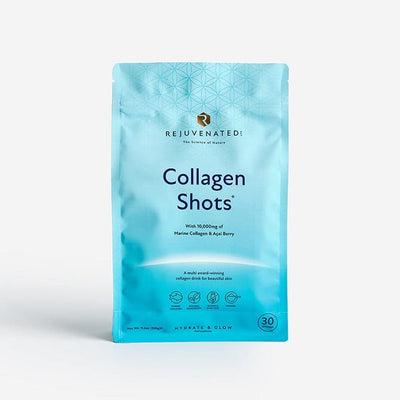Everything You'll Want To Know About Clay Masks
Whether you're battling blemishes, longing for a clearer complexion, or simply seeking a luxurious treat for your skin, clay masks are your ultimate go-to product. Not only do they help to unclog pores and remove impurities, but they also provide an array of additional benefits like enhancing hydration, promoting a youthful glow, and restoring overall skin balance.
But here's the thing; not all clay masks are created equal. There's an abundance of clays out there—each with its unique properties and benefits. From French green clay to Australian kaolin clay and everything in between, we'll guide you through ensuring you find the perfect match for your skin's needs.
Clay Mask Benefits
Clay masks provide numerous benefits for the skin. Here are some potential advantages:
Deep Cleansing
Clay masks are renowned for drawing out impurities and excess oil from the skin. The clay's absorbent properties unclog pores, remove dirt, and reduce impurity build-up, leaving the skin clean and refreshed.
Oil Control
Clay masks are particularly beneficial for those with oily or combination skin. They absorb excess sebum (oil) from the skin's surface, contributing to a less shiny and more balanced complexion.
Exfoliation
Many clay masks contain fine particles or textured ingredients that provide gentle exfoliation when the mask is removed. This helps remove dead skin cells, promote cell turnover, and improve the skin's texture and appearance.
Pore Minimization
Clay masks effectively cleanse and remove impurities from the pores, minimizing their appearance. Regular use leads to a smoother skin surface and smaller pores.
Skin Detoxification
Clay masks have detoxifying properties that remove toxins and pollutants from the skin. This is particularly beneficial for those living in urban environments or exposed to environmental pollutants.
Enhanced Absorption of Skincare Products
Clay masks remove impurities and unclog pores, improving the absorption and effectiveness of other skincare products applied afterward. This allows moisturizers, serums, or treatments to penetrate the skin more effectively.
Best clay masks for your skin type
Clay for Sensitive Skin
- Australian kaolin clay
- French pink clay
Clay for Acne and Oily Skin
- Green clay
- Rhassoul clay
- Australia kaolin clay
Clay for Dull or Dry Skin
- Red clay
- Zeolite
- Australia kaolin clay
Common mistakes when masking
Applying your clay mask to a dirty face
Always cleanse your face before applying your mask. You don’t want to trap in dirt, oil or bacteria under your mask. Removing this allows the mask to do its job quicker.
Leaving your clay mask on for too long
Don’t wait until your mask becomes dry and crackly. By this time, you’ll probably start experiencing itchiness and by then the mask will be starting to pull moisture from your skin.
Yes, you read correctly. Leaving your clay mask on for a long time isn’t recommended as it will start to pull the moisture from your skin. If the mask is starting to become too dry you'll start to feel your skin itch.
Applying too much product
Clay masks go a long way so don’t be tempted to mix up a large batch, otherwise you’ll be masking from head to toe. Unfortunately, when you add water to loose clay mixes, the product won’t last as there is no preservatives. Just start out with a generous teaspoon of dry clay and only add water in small increments.
Why do I flush when I use clay masks, am I allergic?
If you've ever used a clay mask, you may have experienced skin redness or irritation afterward. In this post, we're also exploring the science behind why clay masks can cause flushing and redness, and provide tips for addressing this issue.
Okay I think I’m just flushing, but why?
Great question! The skin can absorb minerals which will basically help to clean and nourish. Minerals you’ll find in clays are calcium, chromium, copper, iron, magnesium, manganese, phosphorus, potassium, sodium and zinc. Many have a stimulating effect and in particular iron will oxygenate the blood, which stimulates blood circulation in the skin, leading to increased blood flow. This increased circulation is the cause temporary redness or flushing.
If you’ve always thought you’re allergic to clay masks, it might be worth checking to see if you’re just flushing. Here’s a quick way to check:
If your skin feels good and you’re not experiencing any irritation throughout the masking time, but the minute you wash the mask off your skin is red and radiating heat – there’s a good chance you’re probably flushing. The redness and heat will usually subside within 30 minutes.
If you’re experiencing an immediate irritation, welts, or a burning feeling during the masking time, you’re probably experiencing a reaction and it would be best to wash off the mask immediately. Try to take a note of the ingredients as quite often it can be just one particular ingredient causing the reaction, and like food allergies you can start to find a common dominator in products that make your skin react.
It's important to note that a mild flush or temporary redness after using a clay mask is generally considered normal and should subside within a short period. However, if the redness persists, becomes more severe, or is accompanied by other concerning symptoms, it's best to discontinue use and consult your doctor.
Clay masks can be a great addition to your skincare routine, but it's important to use them with care if you find yourself flushing. By following these tips below you can enjoy all the benefits of clay masks without any of the negative side effects.
🤦🏼Patch test before use
Before applying a clay mask to your face, patch test a small area of skin to ensure you don't have an adverse reaction.
📖 Follow instructions carefully
Be sure to follow the instructions on the product label carefully, including the recommended amount of time to leave the mask on and how to properly remove it.
💦 Spritz your face while you’re masking
To avoid your clay mask drying out, try spritzing your face with our floral waters to keep the mask moist throughout the masking time.
🚿 Remove your mask in the shower
Allowing water to constantly stream onto your face, while gently wiping off the mask is one way to avoid harsh rubbing or scrubbing, which can increase redness.
🧴Use gentle skincare products
After using a clay mask, avoid using harsh or abrasive skincare products that can further irritate your skin. Instead, opt for gentle, nourishing products like our Chamomile 3 in 1 Gel Toner and SOS Night Cream.
❄️ Apply a cold compress
If you experience redness or irritation, apply a cold compress to your skin to help reduce inflammation before continuing with your skincare routine.
Here's our final thoughts.....
Integrating clay masks into your skincare regimen is like adding a secret weapon to your beauty arsenal. Natural clay masks work tirelessly to purify your pores, detoxify your skin, and restore its natural radiance. With their ability to address various skin concerns, from blemishes to dullness, they offer a one-stop solution for achieving a clear, vibrant complexion.




Leave a comment